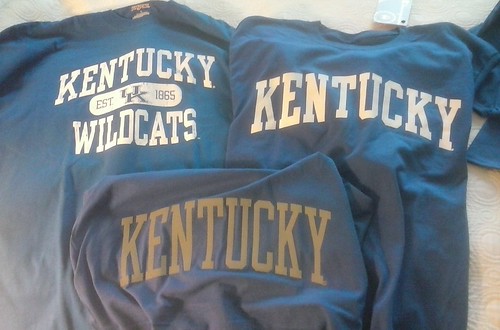 I am really torn about the Boy Scouts of America’s decision to allow girls into their programs.
I am really torn about the Boy Scouts of America’s decision to allow girls into their programs.
I love the idea of Girl Scouts of the USA, and I have some very precious memories of my time as a Brownie and Junior Girl Scout, especially regarding a week-long summer day camp that made me hunger for outdoor activities, something I still enjoy to this day. The emphasis at so many international humanitarian agencies on girls’ empowerment shows why the agenda of the Girl Scouts is still so needed and so relevant all over the world. In addition, the Girl Scouts have long been inclusive, far more than the Boy Scouts: they haven’t required girls to say the God part of their pledge since the 1990s, they have allowed transgendered youth since pretty much the moment they realized there were such, and they have no prohibition against gay leaders or members, unlike the Boy Scouts until very recently.
The Boy Scouts are saying they are now allowing girls into their ranks so that they can pursue Eagle Scout status. But the Girl Scouts of the USA has the equivalent of Eagle Scout status. It’s called the Gold Award. Remember the teen girl who brought to light that New Hampshire still allowed child marriage and she was pushing for that to change? That was her Girl Scout Gold Award project. I would like to see that award get the same coverage and respect as Eagle Scout status. But the reality is that not only does the press rarely mention it, Girl Scout leaders rarely mention it to Girl Scouts. I’ve talked to many Girl Scout leaders about the Gold Award, and many have either never heard of it, don’t really know much about it, or aren’t convinced it’s all that important and something their girls really want to work towards.
When I returned to the USA after living abroad for eight years, I was determined to volunteer for the Girl Scouts. I didn’t want to be a leader, but I wanted to help somehow. Maybe I could be a chaperone on a camping trip! Maybe I could lead some hikes! Maybe I could help recruit more girls to join, and more volunteers to participate! Maybe I could help connect girls to activities about computers, science and the arts. I was so excited to help.
I signed up on the Girl Scouts of Oregon and SW Washington web site in the Fall of 2009, within days of moving into my first home in Oregon. I was contacted promptly about the next and nearest service leader meeting, so I had immediate high hopes. I faithfully attended most of those meetings and any local events – and one in Salem – for more than a year. I immediately volunteered at that first meeting I attended to help with communications. Within two months, I felt the resentment from several of the leaders who didn’t like me, an “outsider”, and didn’t like being asked for information about events they were having: they wanted to just do word-of-mouth among other leaders they liked, and leave out those leaders they didn’t. Some wanted to fly below the “official” radar, which has strict requirements regarding reporting, especially about finances. The new service unit leader put together an amazing recruitment event, and we had one of the largest turnouts of new girls our area had had in years. Several troop leaders resented the success of the event and that we tried to follow the appropriate protocols in assigning new girls to troops. There was a holiday event held by one troop that I didn’t hear about until the night before – and I was told that it was “always done this way and everyone already knows about it.” I kept asking about camping, hiking and STEM-related activities, I offered to help girls get their computer-related badges…. but I slowly learned that a lot of Girl Scout troop leaders aren’t interested in those things – they just wanted to host pizza parties and mani-pedi parties for their daughters and their friends. (and please note: I love mani-pedis – they just aren’t why I joined Girl Scouts).
I also asked lots of questions of the state office about how and why certain decisions were made, why certain things weren’t communicated beyond a page on the web site or a printed brochure we may never see, why social media was so under-utilized, why we never got to do joint activities with the parallel Spanish-speaking troops formed in our area, etc. I rarely got replies to my emails. The communications manager for the state office finally called me at home as I was starting the second year of volunteering and said, per my questions, that she “couldn’t” work with me anymore. So I resigned my volunteer post.
In my year and a half in Girl Scouts, here’s what I also saw: the change the Girl Scouts leadership is pushing for, for more STEM-related activities, for more outdoor-related activities, and for more leadership-building activities, aren’t at all being embraced on the grassroots level. On my way back from a training from the state office in Portland, the leader I was riding with said she didn’t like what the national office was pushing for because it was “too socialist.” I was flabbergasted.
I shared some of these frustrations about trying to volunteer with Girl Scouts on my Facebook account this week, as well as being torn about the Boy Scouts decision. I wasn’t expecting the replies I got.
Here’s a comment from an Oregon friend:
I couldn’t agree more about GS leadership, at least around here. I even tried to be a leader so my girls could be in Girl Scouts, and I did not get good vibes or feel welcomed at all. I left. I refuse to be a part of such an organization.
Another Oregon friend:
I loved being a Girl Scout. I hate the Portland office for Girl Scouts. A few years ago, my daughter wasn’t allowed to join the local troop at her school because they said it was full. Then I was told she could join another but after two months of playing phone games and weirdness, I gave up. Then my daughter told me another girl joined the “full” troop. Pissed me off.
And yet another Oregon friend:
This is exactly what I experienced with trying to get my daughters in. I tried to become a leader, but they didn’t seem to even want that. I don’t want my daughters in an organization that sends that type of message.
A comment from a friend in Iowa:
I am a part of an outdoor Girl Scout community, learning because I am a novice, and while I would love to build this side of our troop, my co-leader has slowly allowed all other activities to be more important for her daughter, and it’s tough to schedule anything. Our SU fall camp out, which is not roughing it at all, is coming up, and she was considering going late so her daughter could go to her volleyball game first. Seriously. My daughter is missing theater class for camp. One girl left the troop because she doesn’t like to get dirty. Only my daughter enjoyed drawing with charcoal recently, while the others were worried about getting dirty (but at least they tried!). I don’t know how you get girls to go out and rough it, or their parents to help make it a priority… I really like the girl led, girl empowerment focus of GS. We need that, we need a space for girls to build confidence in a safe space, outside the comparison to boys, or the sense that their being a girl is somehow an issue. That said, I feel like the GS structure leaves so much in the hands of the troop leader, and it’s not easy to combine your stuff with other troops. You really have to work at it. It sounds like the pack and troop aspect of Boy Scouts has the advantage in that respect, with combined resources. I’m in a great service unit, big and active, but even that is challenging to get people connected and to share resources. If it’s going to change, it has to from the inside. They are making effort to do it, and I appreciate that, but overall, I still do a lot of legwork myself, because the stuff council provides can be rather dry. And there are so many other things people are involved in, that I think it’s just not a priority for them to offer up their help and ideas, much less have their girls be more active. I don’t know if that’s the same with Boy Scouts or not. I do know that a lot of boys will try to get all their outdoor stuff done by like 7th or 8th grade, because they also get very busy in upper grades.
A comment from a friend in Kentucky:
I tried to put my daughter in the first year she was eligible. They had scheduled their very first troop meeting for Thanksgiving break at school, which seemed really odd to me because so many people travel at the holidays. And we too were out of town. So I emailed and called several times about a follow-up meeting or an alternate meeting and never got a response from whomever that was that heads that up here. I gave up.
Not all of my Facebook friends had complaints. One of my Facebook friends in Texas, a guy, wrote:
I was a GSUSA adult leader of Girl Scouts for many years doing single interest groups in backpacking. Many were the nights when my girls ranging from 6th grade to junior college hit the trail with 50 pound packs, walked farther than nearby boys groups, made camp and ate and laughed and told stories without “benefit” of the outhouse sized trailers towed along by the boys, and fell to sleep with the sound of the wind across our pup tents, the hoot of owls and the thrumming of the boy scouts generator.
THAT is the experience I was looking for but never found here in Oregon.
How many other people are out there that tried to volunteer with the Girl Scouts but never got a callback, or were turned away because an insular group didn’t want their participation? How many girls are there that tried to join a troop and never got called back, or joined and found the troop didn’t provide any activities that matched their interests? How many girls left because they had no idea what the Gold Award is and how awesome it is to pursue it and attain it? How many other Girl Scout state office employees are dropping the ball on customer service and outreach?
Girl Scouts of Oregon and SW Washington, Girl Scouts of Kentuckiana, Girl Scouts of Greater Iowa, Girl Scouts of the USA – are you listening?
I bet girls that want to join the Boy Scouts will immediately get contacted about their interest. They will immediately connect with activities they want to do: archery, camping, hiking, canoeing, fishing, computers, and more. They will be reminded at every gathering that they are a part of something special, and their support of each other is as important as their individual interests. And the phone calls from their parents will be returned promptly by Boy Scout leadership.
I debated a lot writing this blog. I support the Girl Scouts of the USA – in principle. I am not at all a Girl Scout hater. I want the Girl Scouts to succeed as an organization. I tried to be a part of helping to make that happen. But, obviously, Girl Scouts has a problem. It has many problems. I hope it will address those problems.
Also see:








